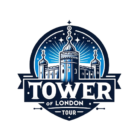Originally, The Bloody Tower was known as the Garden Tower for the constable’s garden that was by it. The square-shaped structure at one time served as a gateway to the Inner Ward. Its lowest level was built by Henry III and the other storeys were added later. It gained its present name in the 16th century because of the murderous deeds which took place in its dark rooms.


The Bloody Tower Events and History
The most notorious deed was the killing of the princes, Edward V and his younger brother Richard, Duke of York. This occurred in 1483 supposedly on the orders of the Duke of Gloucester, afterward Richard III, but there are some who strongly oppose this view and name Henry Tudor, later Henry VII as the culprit.
The generally accepted version of the murder is that Elizabeth Woodville, widow of Edward IV, was forced to allow her sons to live in the Tower, ostensibly to enable the 13-year-old king to prepare for his coronation. Sir Robert Brackenbury was asked to take part in the murder but refused to help.
Thereupon Sir James Tyrrell was sent to the Tower with orders to force the Constable to surrender his keys for one night. Sir James agents found the two boys asleep. One was suffocated with a pillow while the other boy was stabbed to death. The murderers carried the bodies down the narrow stairway and buried them under a covering of rubble in the basement. They were later reburied by Sir Robert Brackenbury close to the White Tower, but all knowledge of the graves was lost. In 1674 skeletons of two boys were unearthed near the White Tower, and in the belief that the grave of the princes had been found the king ordered the bodies to be moved to Westminster Abbey.

Many other figures in history suffered imprisonment or death in the Bloody Tower. Archbishop Cranmer and Bishops Ridley and Latimer who were condemned to death for heresy in 1555, were imprisoned in the Tower before being burned at the stake at Oxford. Other famous prisoners who were held in the tower include Anne Boleyn, the second wife of King Henry VIII, who was executed on the Tower Green, and Lady Jane Grey, who was queen for just nine days before being imprisoned and later executed.
Henry Percy died there in mysterious circumstances in 1585. The infamous Judge Jeffreys was a prisoner here as well. Sir Thomas Overbury, poet, and courtier, was a victim of court intrigue. His food is supposed to have been poisoned, and he is supposed to have swallowed enough poison to have killed 20 men before he died in 1613.

Sir Walter Raleigh spent most of his 13 years of imprisonment in the Bloody Tower, but he was able to perform many scientific experiments. He is credited with having discovered a method of distilling freshwater from saltwater. Also during his imprisonment, he wrote his vast History of the World which was published in 1614, four years before he was beheaded at Westminster.
Today, the Bloody Tower is a popular tourist attraction and is open to the public. Visitors can explore the tower and learn about its dark history through interactive exhibits and displays. One of the most popular exhibits is the reconstructed cell of Sir Walter Raleigh, which includes some of his personal belongings.
Despite its gruesome past, the Bloody Tower remains an important part of England’s history and serves as a reminder of the power struggles and violence that have taken place throughout the country’s past. It is a must-visit destination for anyone interested in learning about the history of England and the Tower of London.
- Journey Through Time: Stonehenge and Windsor Castle Tour - September 11, 2023
- The UK Merlin Annual Pass: A Comprehensive Guide - August 7, 2023
- 10 Prominent People Buried at Westminster Abbey - August 7, 2023
